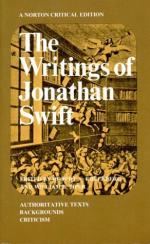[Footnote 12: The Queen’s letter was intended to put an end to disputes in Convocation. She expressed her hope that her royal intentions would not be frustrated “by any unseasonable disputes between the two Houses of Convocation about unnecessary forms and methods of proceeding.” She earnestly recommended that such disputes might cease. The bishops prepared an address, but the Lower House insisted “on the enlarging the fourth paragraph, and upon answering the several heads of the Queen’s letter” (Chamberlen’s “History of Queen Anne,” p. 365, and “Daily Courant,” Dec. 19th). The real reason for the disputes between the two Houses at this time lay in the fact that the Upper House, owing to Tenison’s influence, was largely Low Church in sympathy, whereas the Lower House, with Atterbury as its leader, was of the High Church party. [T.S.]]
[Footnote 13: Dr. Smalridge (1662-1719) called for the Queen’s letter to be read. The Archbishop prorogued Convocation for two days, and then again until January 17th. An address to the Queen was presented on January 26th (Lathbury’s “History of Convocation,” second edition, p. 407). Smalridge was Dean of Carlisle, 1711-13, and Bishop of Bristol, 1714-19. [T.S.]]
[Footnote 14: “The Case etc. Consider’d” quotes on the title-page: “Jude 10. But these speak evil of those things which they know not.” [T.S.]]
[Footnote 15: “Dr. Atterbury, in preference to Dr. Kennet, was chosen prolocutor by a great majority.”—TINDAL, iv. 206. [T.S.]]
Footnote 16: The Latin speeches were made on December 6th, when the prolocutor was presented to the Archbishop, by Dr. Smalridge, Atterbury, and Tenison. The one speech to which Swift refers may have been Tenison’s, whose style was fairly dull. [T.S.]
NUMB. 23.[1]
FROM THURSDAY DECEMBER 28, TO THURSDAY JANUARY 4, 1710.[2]
Nullae sunt occultiores insidiae, quam eae quae latent in simulatione officii, aut in aliquo necessitudinis nomine.[3]
The following answer is written in the true style, and with the usual candour of such pieces; which I have imitated to the best of my skill, and doubt not but the reader will be extremely satisfied with it.
The Examiner cross-examined, or, A full Answer to the last Examiner.
If I durst be so bold with this author, I would gladly ask him a familiar question; Pray, Sir, who made you an Examiner? He talks in one of his insipid papers, of eight or nine thousand corruptions,[4] while we were at the head of affairs, yet, in all this time, he has hardly produced fifty:
Parturiunt montes, &c.[5]




